WARNING: This article assumes you have prior knowledge of the mechanics and systems of Star Wars Legion. This includes but is not limited to understanding ranges and threat distance, keywords, army composition, action economy, etc.
So, you’ve chosen to play Darth Vader in Star Wars Legion? There are only 3 possible reasons as to why you’ve made such a foolish decision
You’re a meta contrarian
You enjoy a challenge and/or are masochistic
You just love the character of Darth Vader and have worshipped him since you were little
If you’re anything like me, you’re all of the above and then some. But before you zip over to your favorite list builder and create the greatest Vader list to ever grace the tabletop, let’s first look at what makes Vader click in Legion. While there are 2 versions of Vader in the game as of this article, I’d like to specifically focus in on Operative Vader and how to get the most bang for your buck out of him.
A Quick Look at Vader:
Operative Vader carries over many design elements from Commander Vader but also deviates at certain points. Operative Vader clocks in at a decent 155 Points before the attaching of any upgrades, and features 2 Force Slots and 1 Training Slot for the attachment of said upgrades. Vader being Vader means you have access to his sizable 6 unique Command Cards (ties for most with Luke) and all the abilities they grant. Keywords like Deflect, Immune: Pierce, Master of The Force 1, and Relentless are shared between both versions of Vader, but Operative Vader does take a hit as he has 2 less HP, 3 Courage rather than “-“ and 1 less red die on his lightsaber. However Operative Vader brings along new keywords like Jedi Hunter, Spur, and (my favorite part of him) the Force Throw attack.
On the surface it can seem like Operative Vader is the inferior version. Not only does he need to pay the Commander Tax, he also loses 2 HP, a coveted Force Slot, an attack die on his Saber, and can now take suppression. But I’m hoping to show that this isn’t the case.
Building Character:
As mentioned earlier, Operative Vader has 2 Force Slots and 1 Training for upgrades. Like all Force users in Star Wars Legion, the first of those slots will be immediately occupied by Force Push. If you for some reason aren’t taking it, then I can only hope you see the error of your ways soon enough. Looking at his second Force slot 3 options make themselves apparent:
Force Barrier
Force Choke
Force Reflexes
I think the Choke is the strongest of the 3 options due to how you can remove heavy weapons off the board with great ease vs. better gunlines and the shenanigans it opens up when combined with other Force powers. Barrier is a strong choice as well if you plan to try and play as more a defensive/linebacker and lets you keep pivotal core units alive for longer. Reflexes is the weakest of the bunch, but is by no means bad. Getting Vader a dodge is always great since his Commander Cards are lacking in that regard, but Vader should ideally be activating at the end or close to the end in turns where he could potentially be shot at so its timing is less than ideal.
The training slot also presents a bevy of choices on how he can be built:
Endurance
Tenacity
Seize The Initiative
In my opinion, Endurance is the preferred of the 3 upgrades due to how it helps negate the negative aspects of using Spur to speed Vader up. Tenacity helps to make up for the lower dice count between Commander and Operative Vader’s lightsabers. Seize is a bit more situational and I would only recommend it if you are running Vader with other characters like Iden Versio or Bossk, or are attempting to use Cunning with either Krennic or the upcoming Agent Kallus.
For the purposes of any further examples, the kit I will be using for Vader is Push, Choke and Endurance
Throwing It On The Ground:
The aspect for me that pushes Operative Vader over his Commander counterpart is that new ranged attack he comes with. I love it so much this specific section of the article is dedicated to just it and how to make the most of it. The attack itself is pitiful at first glance. 2 Black Dice at Range 2 with no surge or Pierce. Blast helps in the negation of cover, but it’s a worse Imperial Sniper shot (and we know how bad they feel now). But it all changes with that final weapon keyword. Scatter. That one keyword turns this attack from an afterthought to why you should be playing Operative Vader. It’s a rare keyword so there’s no hard feeling if you don’t know what it does. The RRG reads:
“After a unit performs an attack using a weapon with the scatter keyword against a trooper unit whose minis are affixed to small bases, it may move any nonunit leader minis in the defending unit, following all the rules of cohesion, as if the defending unit leader had just performed a standard move.”
In layman’s terms, if you attack an enemy trooper unit with multiple models using Force Throw, you get to recohere in any way you chose. You don’t even need to cause a wound or even roll a hit! I can’t begin to describe how powerful this is and I’d even go so far as to say that this is one of the 3 strongest weapon keywords in the game. But why is it so good? Read along and I’ll show you.
I Bet You Look Good On The Dancefloor
Figure 1
Let’s say you’re approaching the enemy army and you see a unit of Clone Troopers around Range 2 hiding behind heavy cover and not out in the open on the dancefloor. How rude!
Thankfully Operative Vader has an easy solution to this terrible situation. You move out from behind your cover, trigger Force Throw off Relentless, more or less ignore whatever result you get on dice, and then recohere them into the open before moving back behind your cover.
Figure 2
What’s the point of this? Let’s add in some context. It’s turn 3 and that unit has already activated, and it’s a clone trooper so it indubitably has a bevy of surges in tow. That’s a unit with 66% chance to save that is also behind heavy cover. It’s a tough nut to crack. Using Force Throw you’re not only dropping its cover from heavy down to light (through clever recohering), but you’re also using it to move its minis out of range of other friendly clone troopers for token sharing. Which means that all of a sudden that unit is only canceling 1 hit from cover and has dropped it’s save percentage from 66% to 50%. And in the event they haven’t activated, you’re forcing them to move instead of taking something like an aim or a dodge.
Not only does this open up an excellent avenue to manipulate enemy positioning, but it means your units which would otherwise be ineffective when attacking, are able to punish your opponent. The best example of this is the notoriously inaccurate Imperial Scout Snipers (who are probably camped way far away from ARCs), who need to roll a single hit off 2 dice to kill a clone (due to SS1 knocking down cover 1) mini vs needing 2/2 before.
Figure 3
Or maybe it’s even to get a light cover shot for your unit of RT97c Storms
Figure 4
GET OVER HERE!:
Applying the above principles we can take it a step further. If your opponent’s unit would fall just under Range 2 (or 9.8 inches exactly) of where Vader would make his attack, you can combo Force Throw with other Force powers for devastating effect. Looking first at Force Push in a similar scenario.
Figure 5
Taking the same Clone unit as before, if they would still be in range to share tokens after the scatter, we can combo the scatter with Force Push to knock them way into the open away from any nasty token sharing and even into difficult terrain.
Figure 6
Let The Bodies Hit The Floor:
Lets throw another Force power into the mix. Force Choke. While the unit from the examples has been a Fives Phase 2 unit (because of my lack of planning), I’m gonna need you to pretend it’s actually just a basic Z6 Phase 2 unit for a bit. We cool on that? Good, because I’m not taking those photos again.
Taking a look at Figure 5, we can see that the mini at the very top is already at the very edge of Range 1 from Vader. Right off the bat there, Force Throw has allowed for us to use Choke on a unit that was at least 9.9 inches away from Vader to kill a heavy weapons squad.
But let’s say that you wanted to Choke the unit leader, whether it’s because they’re holding an objective of some kind (keep this part in mind for later), or because you want every forthcoming wound to kill Fives. Following Figure 6, popping the range band shows that the unit leader is now at Range 1 of Vader.
Figure 7
So what’s this building towards? There’s no way slightly below Range 2 Choke is the best you can do (despite that in itself being pretty good)? You would be correct. Without further ado, allow me to introduce you to ………
Vader’s Gambit:
When hostages and hostage units go to sleep at night, this is the play they have nightmares of.
Vader’s Gambit is a play/pocket strategy which I sorta stumbled into prior to GenCon 2020 and since no one had ever mentioned it prior to myself, I claim it as my own creation. It’s gone nameless till recently, but has been making the rounds on TLD (The Legion Discord). It effectively entails Vader combining every single Force power he can use on turn 2 to trap your opponent’s hostage in a position where its carrier has dropped it and is easy for your own troops to acquire. And it’s only gotten stronger since the full reveal of Agent Kallus. So, how does this monumental turn work? Unlike the previous examples, I took these screen captures in a game just to show that it’s not all just theory. I am running my own version of Imperial Hero Hammer featuring Kallus, Vader and Bossk vs an 11 ACT Double Generic Clone Gunline on Major Offensive, Hostage and Hostile Environment. Here is a look at how the board looks after deployment:
Figure 8
Turn 1 strategy is pretty simple. Play ISB Investigation, force ppponent to drop 1 Pips, and order Vader and Kallus. Go with Vader last and advance him up aggressively down the right side of the crate ahead of him. Round 1 saw only 3 engagements, Yellow ARCs doing 1 wound on Vader, Teal ARCs killing 1 Red Stormtrooper mini, Bossk killing a Blue Phase 2 mini.
Figure 9
Now is when you spring the gambit. Playing Vader’s Might uncontested lets you activate Vader first and combo. The advantage of playing Vader so aggressively means that we’re within range to move backwards and still execute the combo, ensuring Vader’s safety. Move Vader backwards just far enough that Range 1 from him and cohesion from the Green Clones overlap.
Figure 10
Trigger Relentless for Force Throw, roll dice because you have to and then cohere them to the very edge.
Figure 11
Use Vader’s Might to place them in melee with you. The unit took 2 wounds as a result of it.
Figure 12
Force Push the unit out of melee behind you
Figure 13
Choke the unit leader forcing the hostage to drop
Figure 14
Take your second action and move into melee with the Green Clones behind heavy/LoS blocking cover
Figure 15
Here’s a quick shot of how far the hostage moved. The lone Green Clone represents where the unit leader started.
Figure 16
The hostage was moved 14 inches while the Green unit leader moved 16 inches from their original positions. Both hostages are now within Range 2 of your deployment zone. Congrats on winning Hostage turn 2
Figure 17
What did we learn from that demonstration?:
When it comes to Hostage, Operative Vader loves playing Run Away With Me for your opponents hostage unit, and can almost single handedly win a game of hostage on his own. By combining Force Throw, Vader’s Might, Force Push and Force Choke (in that order) you have the ability to move the hostage over 12 inches. At that point even if Vader bites the dust, you’ve almost guaranteed yourself 3 VPs if not 4 and have won the game.
Does this work against Rex?:
Yes, but it’s pretty much suicidal unless you can find an incredible safe spot to land. Rex lists end up at 10 ACTs and the Vader list I am running is at 11, which ensures Vader can go last and then first. Assuming we sprint him as hard as possible at in the first round and the Clones double move, this is the situation at the start of round 2
Figure 18
You could move up to 10 inches from the unit, scatter them, Vader’s Might to point 1, Force Push to point 2, Choke and then move Vader onto the boxes in Heavy Cover/LOS Blocking terrain. It’s incredibly risky, but it’s possible though I can’t say I’d recommend it.
Figure 19
Further Applications:
Vader’s Gambit can see use outside of just Hostage. These same principles can be used to deny a box grab at the end of turn 1/start of turn 2 from a Mando/Boba/Sabine, or challenge a unit that infiltrated onto the center box on Recover The Supplies. It can also be used on Bombing Run to throw your opponent way out of scoring range.
Words of Caution:
There is no hard and fast rule to any of this. While it’s an incredibly powerful combo, it is still heavily reliant on terrain and deployment. Not to mention there are counters to it as well. They include Rex via Scouting Party, Palpatine via And Now You Will Die, Han Solo with literally any of his CCs, Kallus via ISB Investigation, and in some instances Dooku via Double The Fall.
Conclusion:
The above examples and plays opened up by Force Throw are why I believe Operative Vader to be the superior Vader. Not only would Commander Vader be unable to do similar things, but barring Dooku situationally, no other Force user can either. Using Force Throw not only allows for Vader to reposition your opponent by force, but it also works as a form of non-combat utility and betters the rest of your army
TLDR:
My name is Cody1307, I’m horny for Scatter, and I’m a slut for Force Throw combos





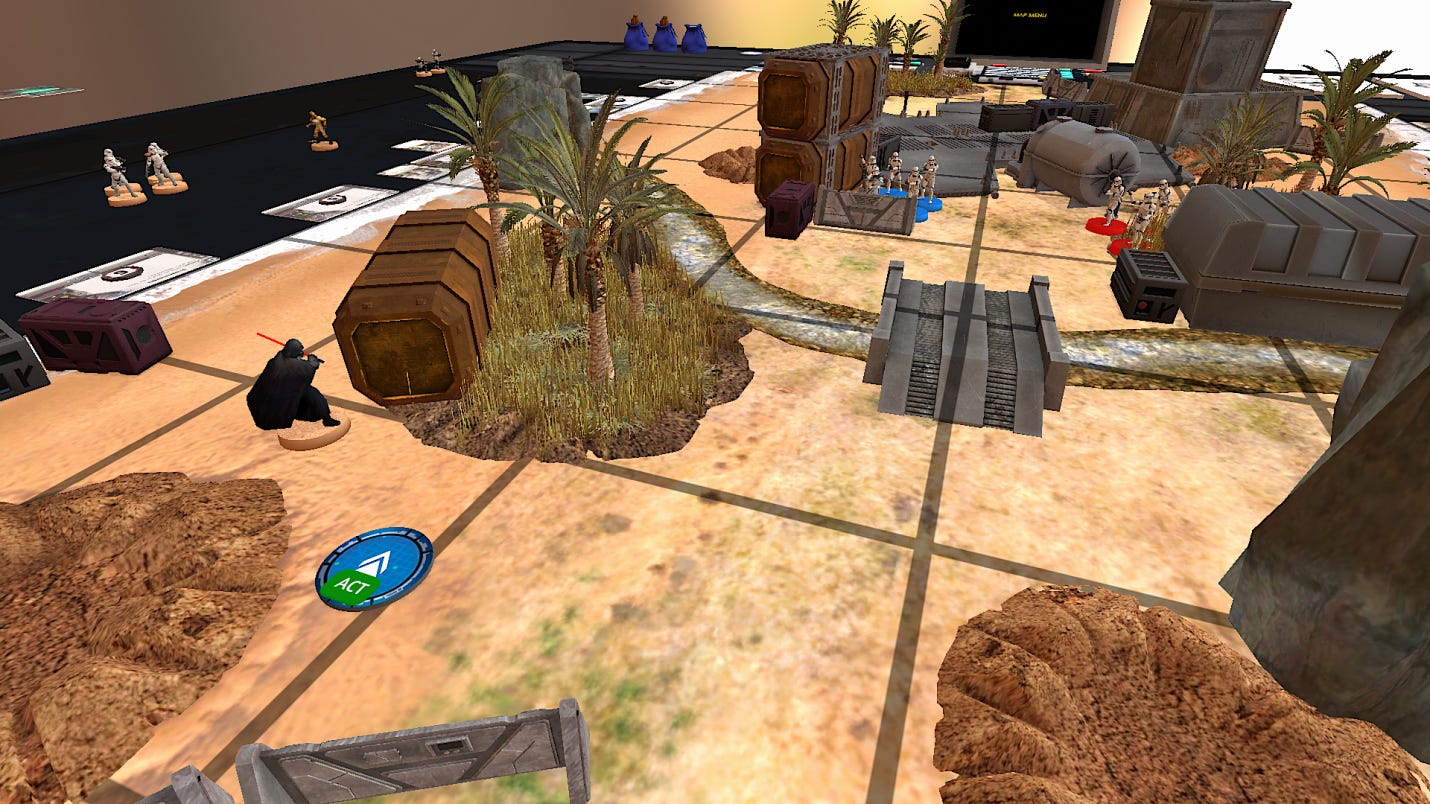


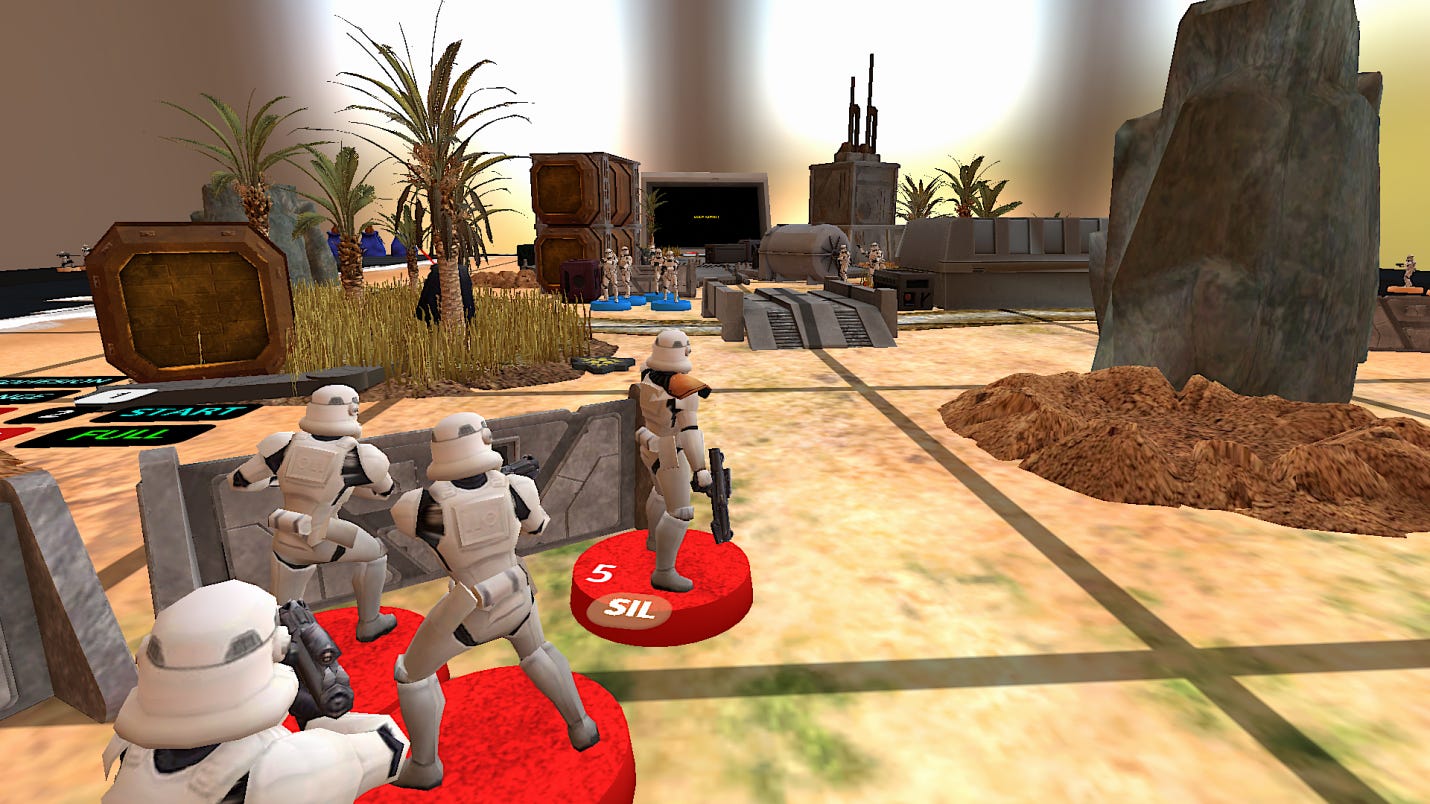

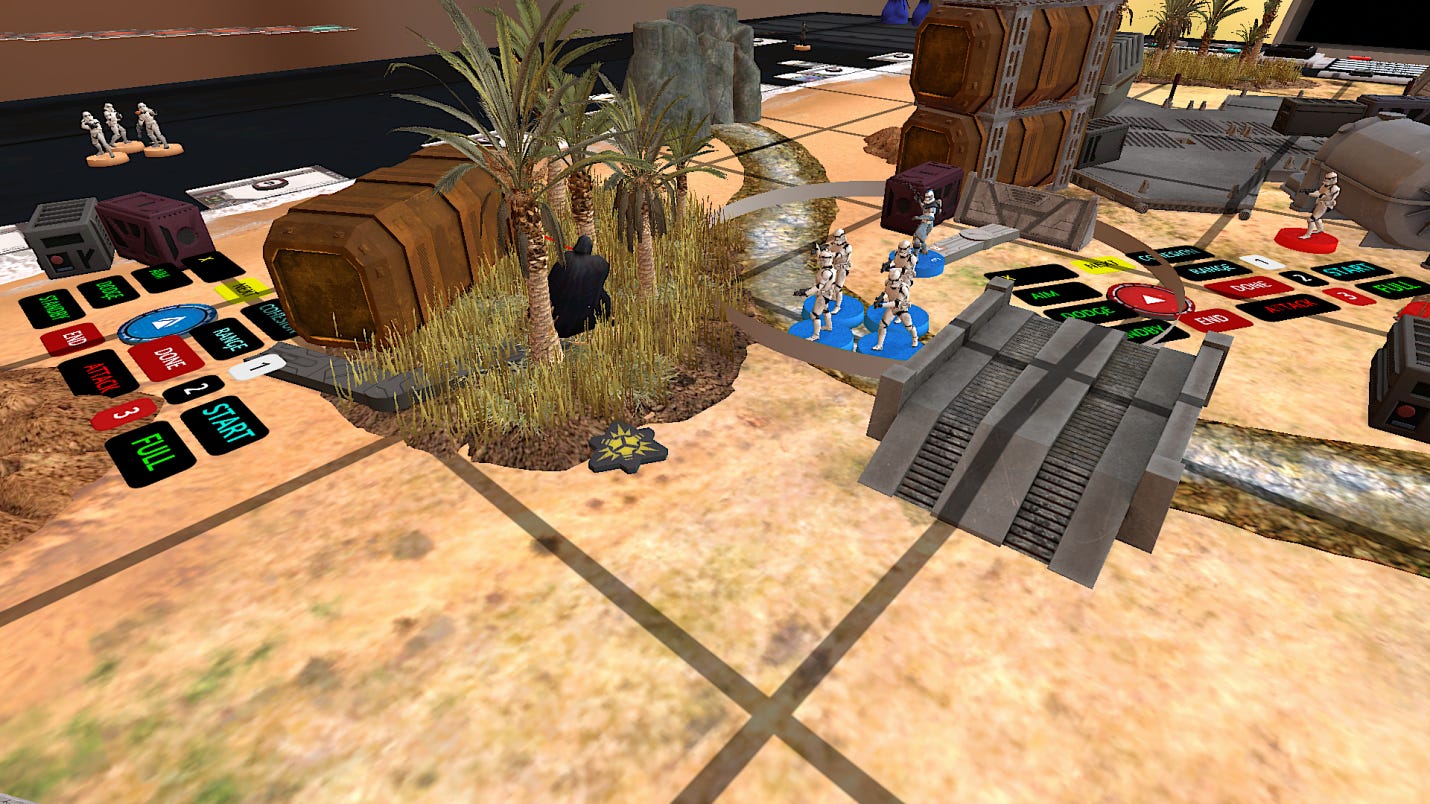


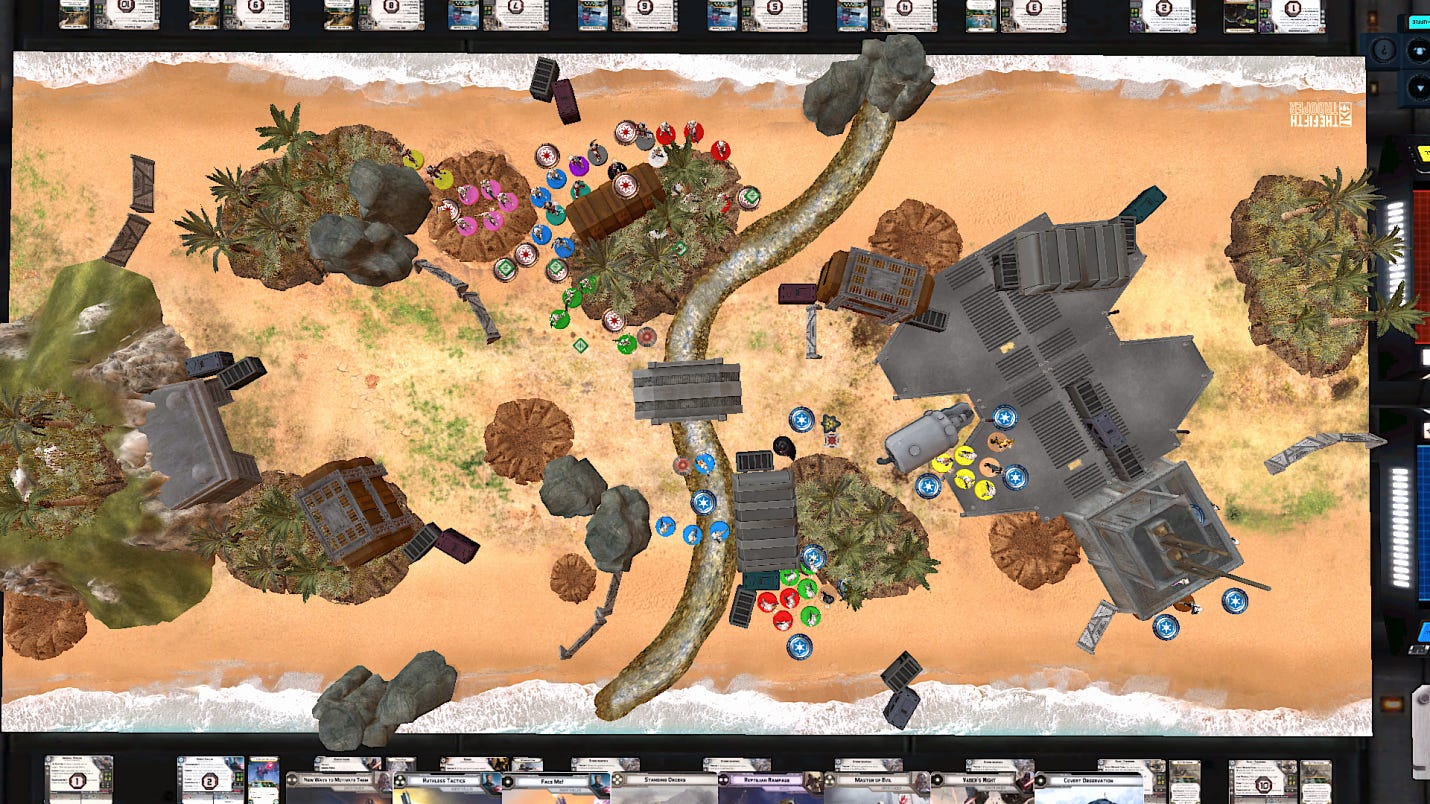
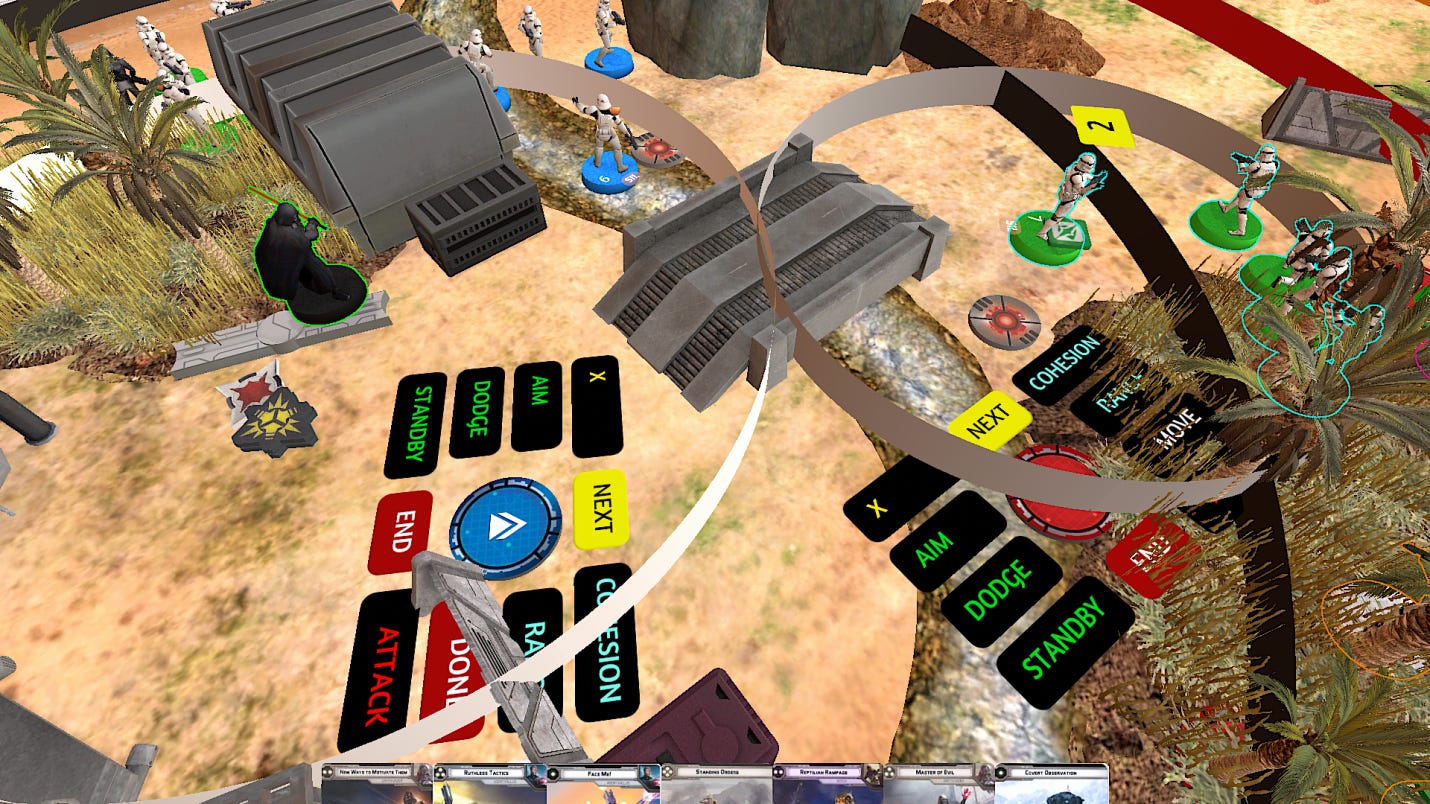

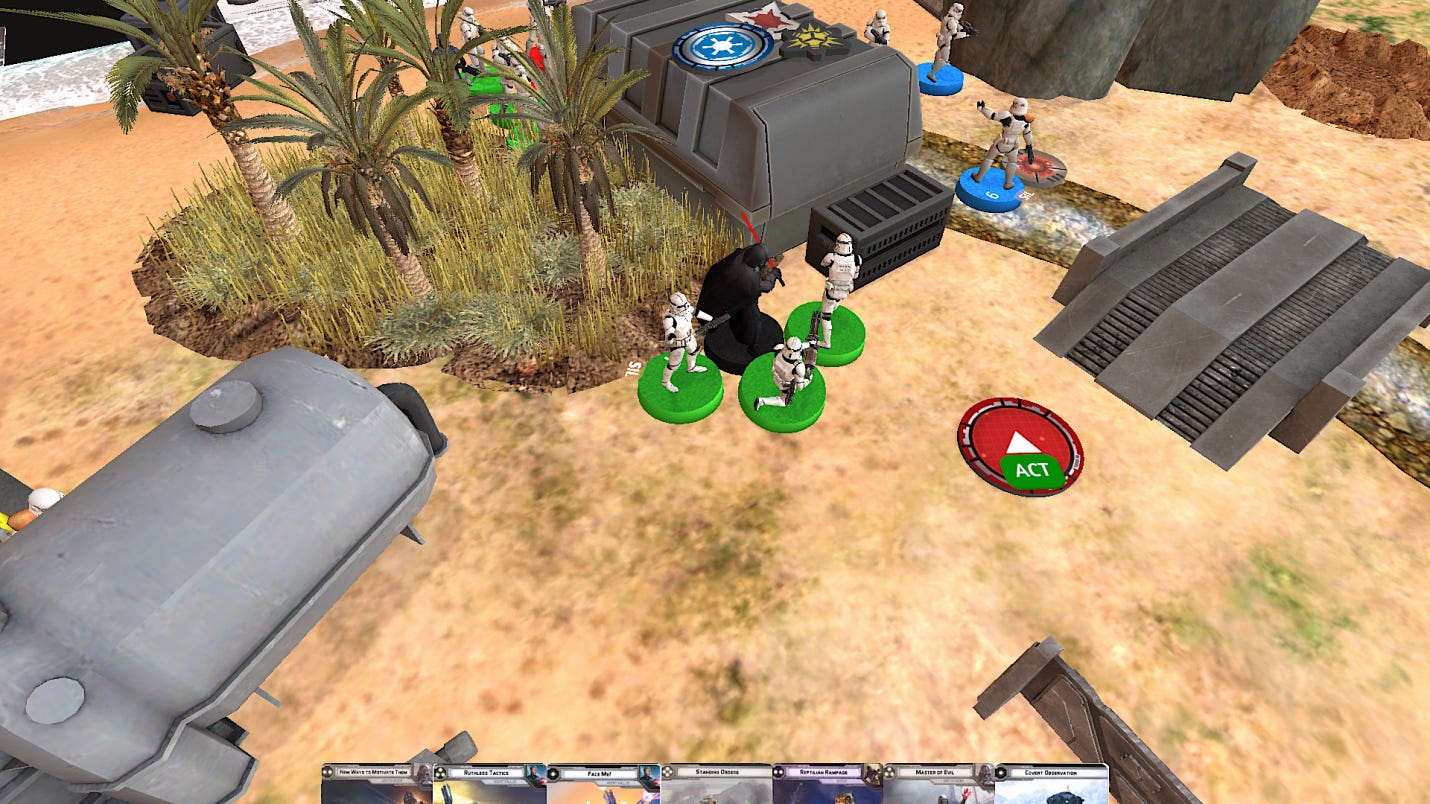
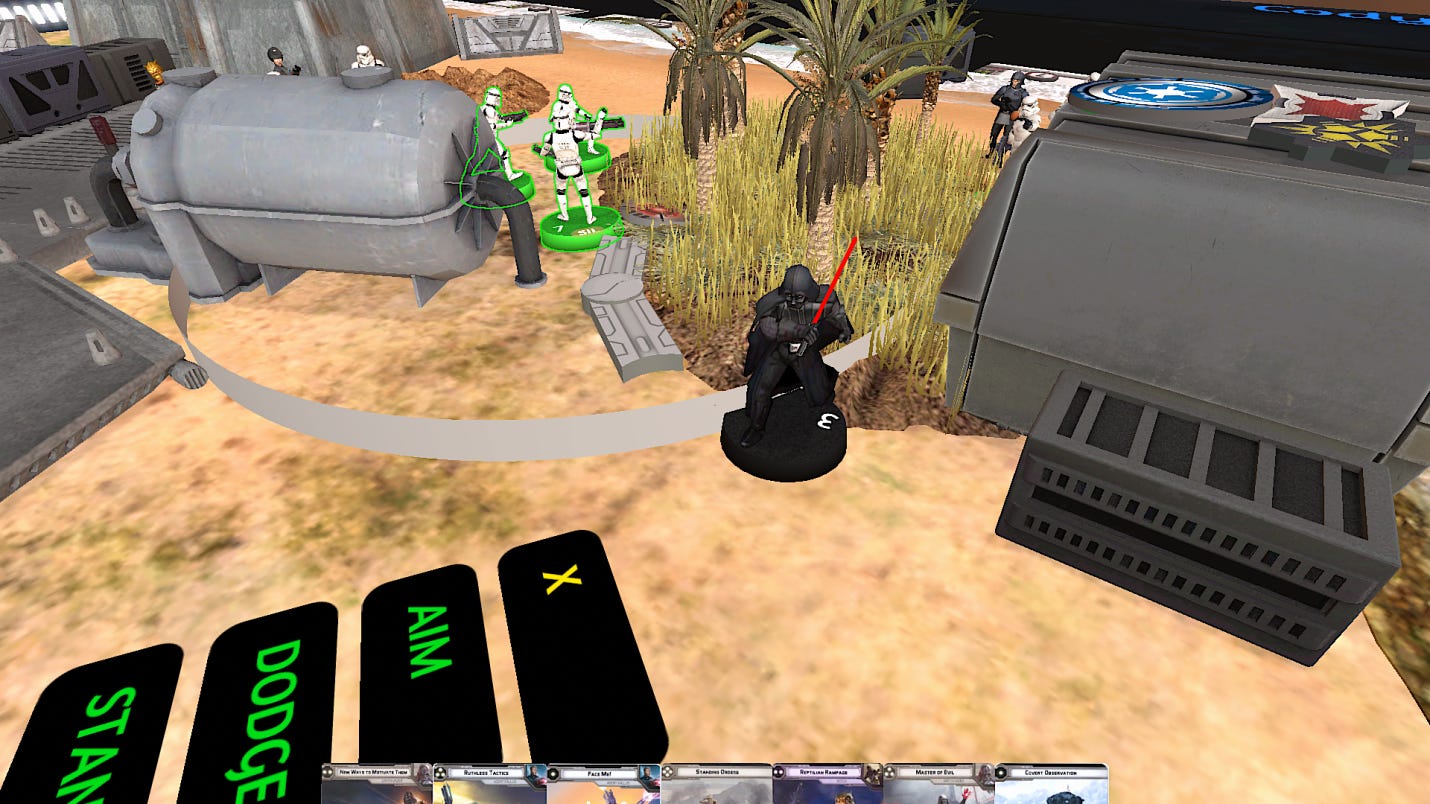
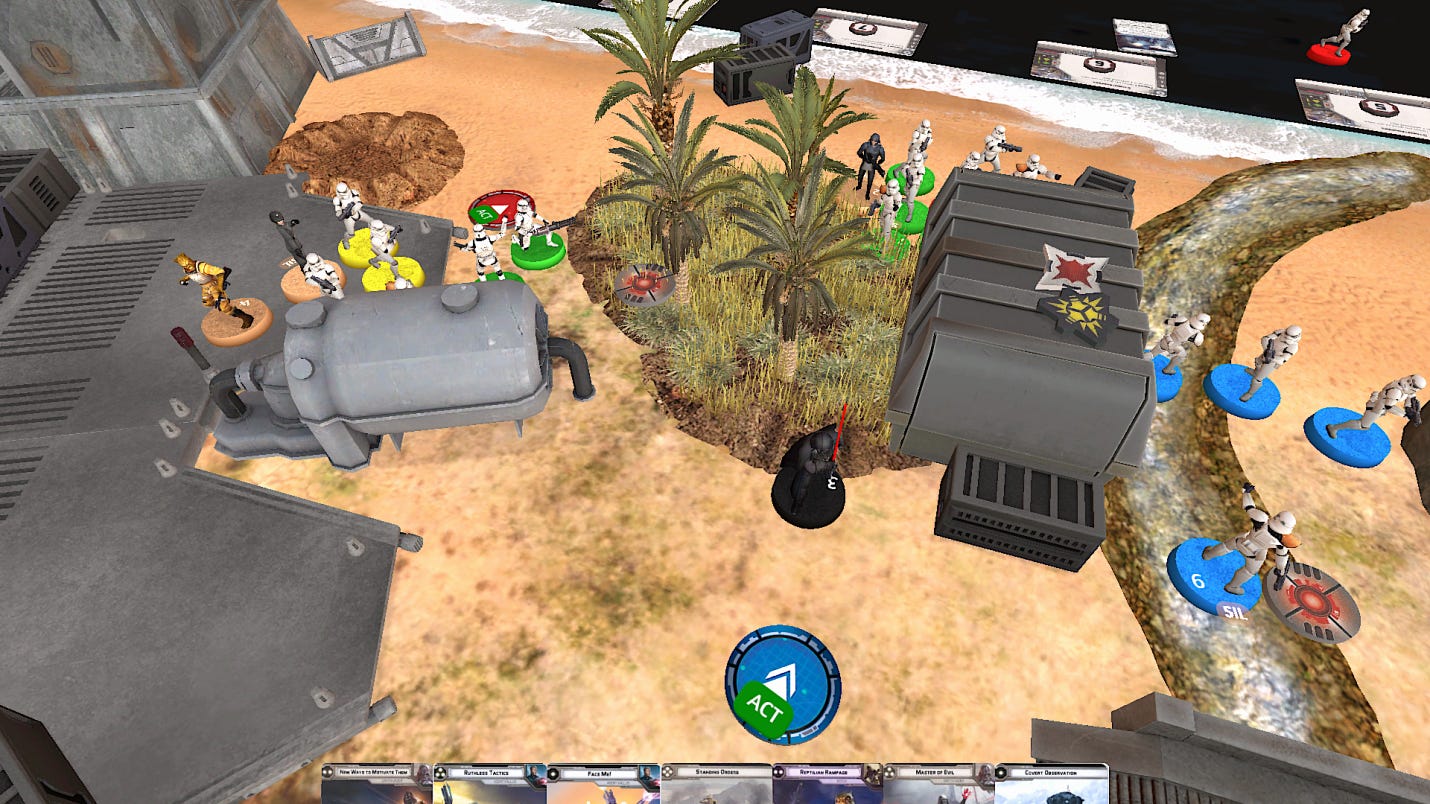
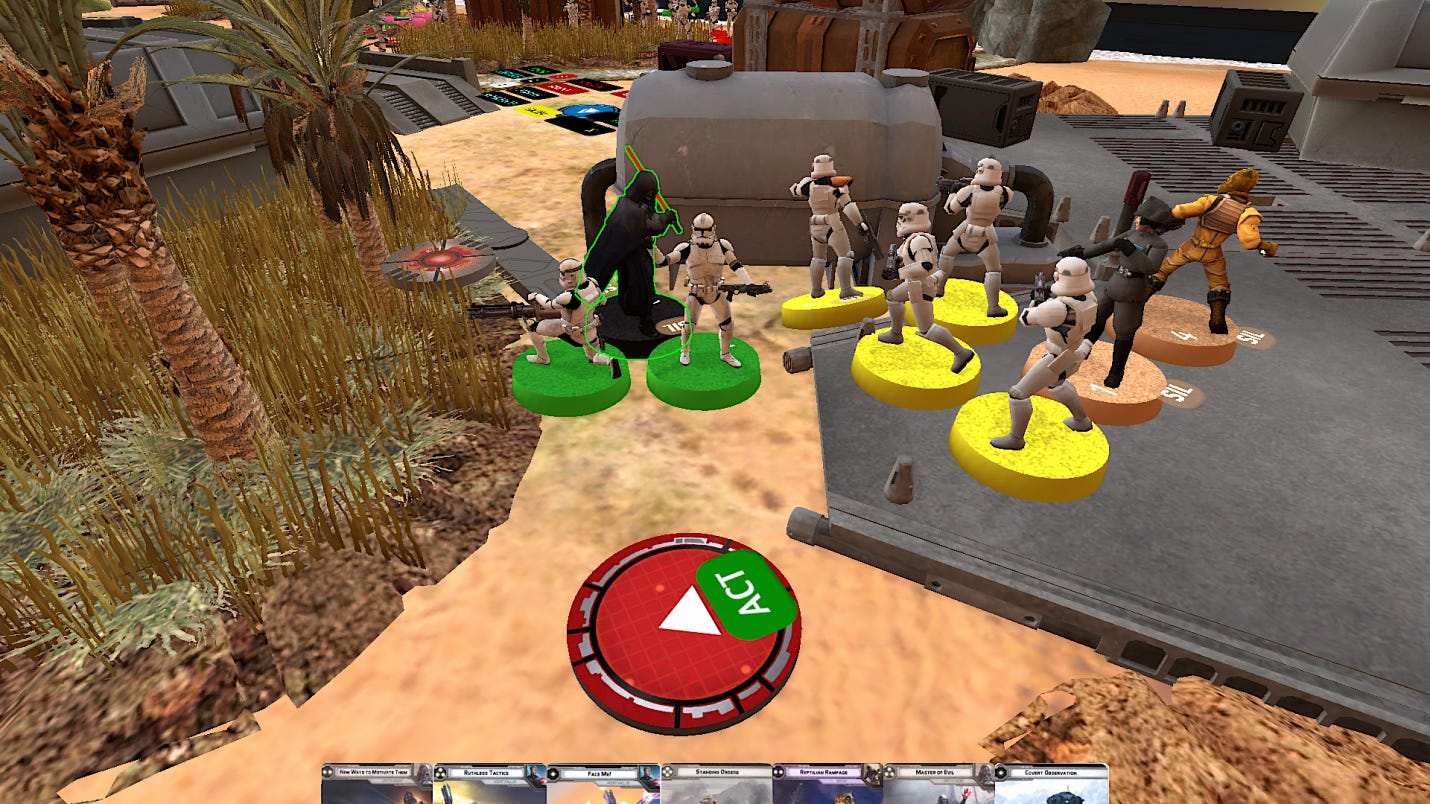



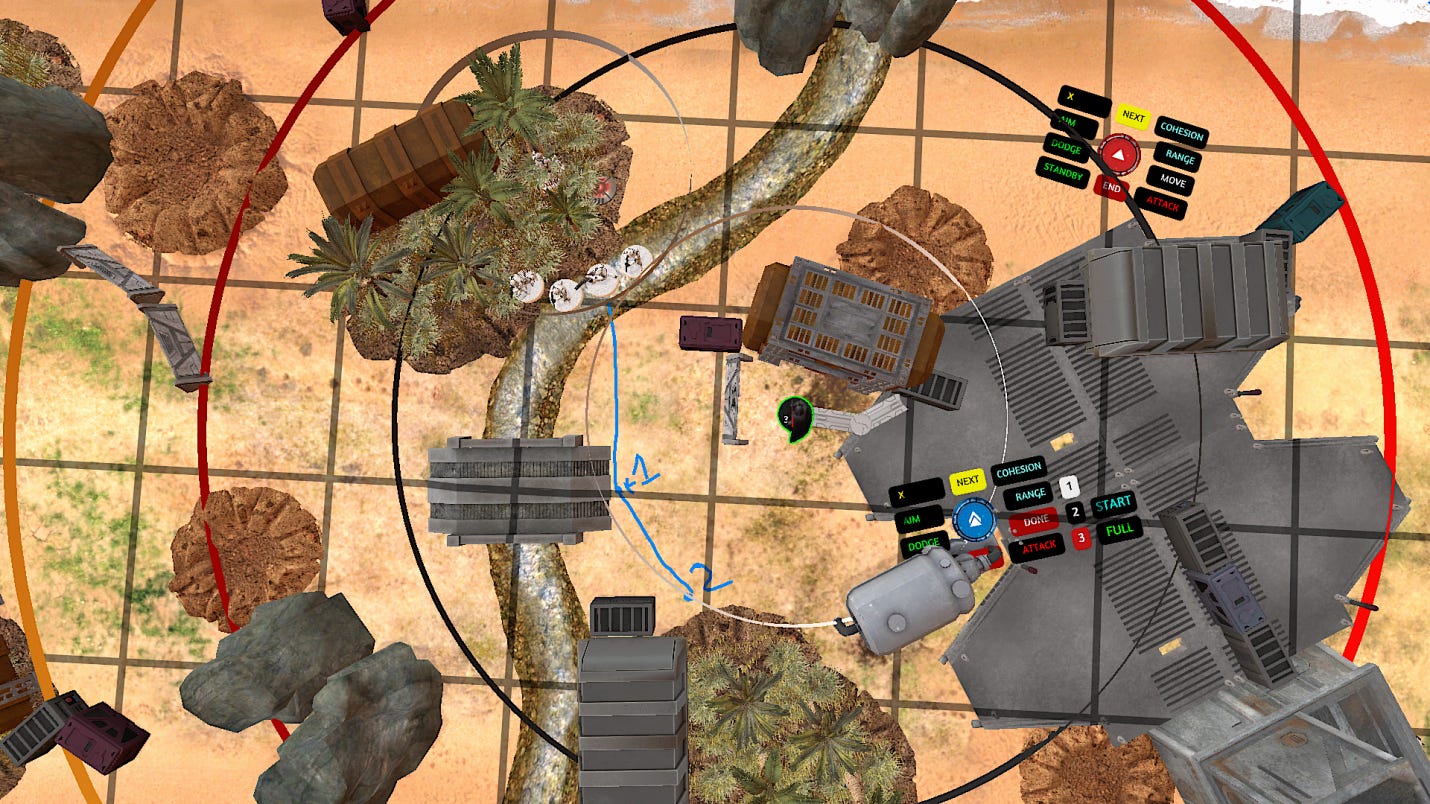
Gotcha - makers sense. Thank you.
Again though, great use of powers and combos. Really cool
Great article. Quick question. In Figure 2, Did Vader’s Force Throw attack cause a hit to give the Clones a Suppression token? I’m asking because I'm confused as to why they have Cover 1 after 4 minis cohering out of cover. Thanks!